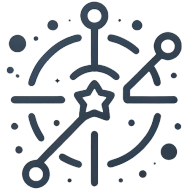How to Use Data and Analytics to Inform Community Marketing: 5 Examples
Unlock the power of data and analytics in community marketing with proven strategies and expert insights. This article dives deep into practical examples that showcase how knowledge can be transformed into actionable results. Learn from industry leaders how to tailor experiences, drive engagement, and create content that resonates with your audience.
- Identify Top Collectors for Tailored Experiences
- Track Activities That Drive Engagement
- Focus on Popular Topics to Boost Engagement
- Segment Audience for Targeted Campaigns
- Highlight Content That Resonates Most
Identify Top Collectors for Tailored Experiences
Using Data and Analytics for Community Marketing: An Art Company Example
At Lumas, an international art company, data plays a crucial role in building meaningful connections with our community. By analyzing purchase history, we identify top collectors and offer them tailored experiences, such as early access to new collections, invitations to exclusive artist events, or personalized recommendations that match their tastes.
Social media and engagement analytics also provide insights into audience behavior. For instance, we noticed younger buyers interact more on Instagram, prompting us to host live Q&A sessions with artists and behind-the-scenes content.
One example of success: launching a loyalty program for collectors based on these insights. Data revealed a 20% increase in repeat purchases, confirming the effectiveness of personalized engagement. This approach not only drives sales but also strengthens the community by fostering deeper relationships with our most passionate art enthusiasts.
Track Activities That Drive Engagement
To effectively use data and analytics in community marketing, the first step is having the right tools in place for tracking and understanding customer behavior and attrition. Once these systems are set up, you can identify the activities and touchpoints that drive sign-ups or purchases. For example, during an "Engagement Contest" I ran, I tracked user interactions within the app, such as completing quizzes or exploring specific features. By analyzing this data, I identified the activities that led to higher engagement and conversions. This insight helped refine future campaigns, focusing on the features and actions that resonated most with the audience. Using data to guide the strategy not only improved engagement but also increased long-term retention by tailoring efforts to what worked best.
Focus on Popular Topics to Boost Engagement
We use data and analytics to refine our community marketing strategy by monitoring engagement metrics and audience behavior within our community platforms. For example, we analyzed participation rates in our online forums and found that discussions around sustainability topics were particularly active. Using this insight, we organized a series of virtual events and content focused on eco-friendly practices, which significantly boosted community engagement. Data-driven decisions like this help us align our efforts with what resonates most with our audience, fostering stronger connections and creating a more meaningful and active community experience.

Segment Audience for Targeted Campaigns
In community marketing, data and analytics play a crucial role in shaping strategies that are both targeted and effective. I leverage data to understand the needs, behaviors, and preferences of the community I'm working with. By tracking engagement metrics, social media activity, and feedback from surveys, I can identify patterns that reveal what resonates most with the audience. With my experience and MBA specializing in finance, I've learned how to not only analyze this data but also interpret it in a way that aligns with the broader business goals. This allows me to continuously optimize marketing efforts and make adjustments in real-time for maximum impact.
For example, in one of my coaching engagements with a small business looking to expand its reach, we used customer data to segment their audience and create tailored campaigns. By analyzing the sales data, we identified which products had the highest demand in different local areas. We then focused community marketing efforts on those specific regions with targeted offers. This data-driven approach resulted in an increase in local sales within just a few months. This success was made possible by my years of experience in business analysis and my ability to turn raw data into actionable insights that deliver real-world results for my clients.
Highlight Content That Resonates Most
I use data and analytics to refine my community marketing strategy by monitoring engagement metrics like social media likes, shares, comments, and website traffic. Tools like Google Analytics and HubSpot help me track which content resonates most with my audience. For instance, after noticing high engagement with posts about sustainability, I shifted future content to highlight eco-friendly product features. This data-driven approach ensures my community marketing is more targeted and aligns with audience interests, improving overall engagement.





